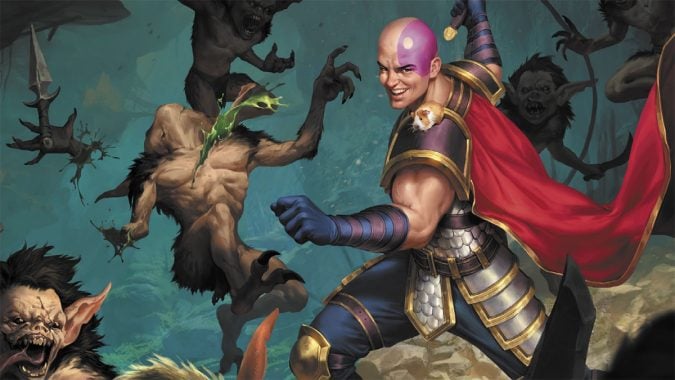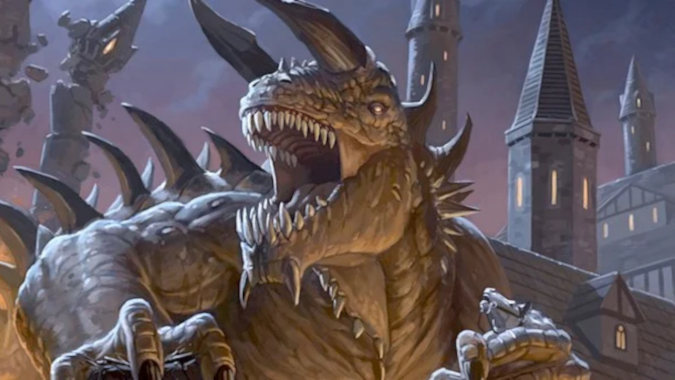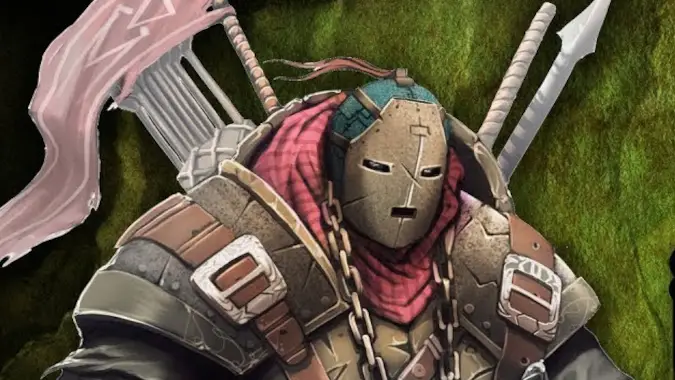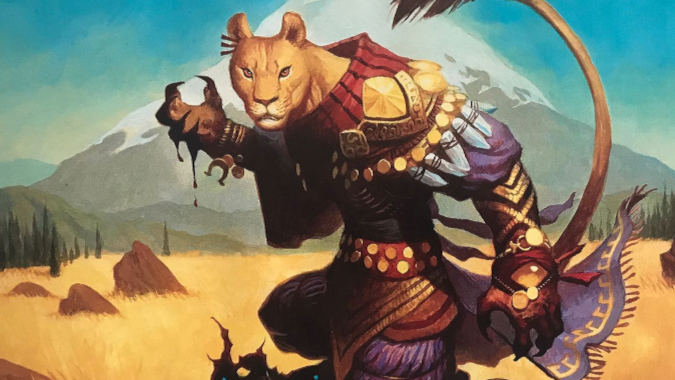House rules we like that you can steal for your own D&D campaign

We’ve talked about house rules before, and they are a big part of a DM’s journey through learning how to run D&D games. Almost every single edition of the game has had things some DMs haven’t liked or wanted to try changing around, and so I feel like it’s worth discussing a few options here for you to try out in your own games.
Not all of these house rules will work for all campaigns — one of them I think is really for experienced groups that really love added granularity in their tabletop experience. But part of the fun of making house rules for your Dungeons and Dragons game is deciding they don’t work and changing them — a house rule for house rules, if you will.
So here are three options for you to play around with in your own D&D campaign.

Critical successes and failures mean there’s always a chance — a tiny, tiny chance.
This is one I see bandied about often, so it’s a great place to start with trying out house rules. The fact is, it feels weird when playing D&D to roll a 20 on a Skill Check or a Saving Throw and still not actually save. But rules as written in D&D 5e, rolling a 20 on a Persuasion check to seduce a Dragon will not succeed if your DM set the difficulty to a 40 and you don’t have +20 to your roll. Similarly, if you have a +16 to your Wisdom save and roll a 1 to save against a DC 17 Charm spell, you still succeed. There’s no penalty to rolling a 1 aside from it being the lowest you can mathematically roll — it doesn’t automatically fail. The only exception is Death Saving Throws, because you have to roll a 10 or higher on those or fail, there’s no bonuses to those.
But one of the house rules that I see adopted by a lot of groups — sometimes accidentally — is to in fact assume that a 20 on a Skill check or saving throw is an automatic success and a 1 is a critical failure. Even if this is a conscious choice, there’s no reason it can’t work. It just means there’s always a slim chance of success — or failure — when you allow your players to make a roll. You can always tell them they don’t get to roll because no matter how charming Flaerun the Bard is, Tshaktaran the Ebon Wing just isn’t into him. But it definitely needs to be something you watch carefully and are fully aware of.
For example, an Ancient Black Dragon has a Con save bonus of +14. Rules as written, it cannot fail a Con save against a DC 15 or lower. But using this rule variant, a 1 will fail no matter how high its bonus is. This increases the power of its Legendary Resistances, but also increases the odds of the Dragon being forced to use those Legendary Resistances.

Expanding opposed rolls or contested checks adds even more randomness to every turn
There are already opposed rolls, or contested checks, in D&D 5E. You decide to try and lie about something, and so your DM makes you roll you Deception skill against the King’s Insight, for instance. Grapple checks, where you make an Athletics roll against the target’s Athletics or Acrobatics, are another example of a contested or opposed roll.
With this common house rule variant, all attacks become contested. The attack roll itself remains the same as it always is — you make an attack combining your Proficiency Bonus, your Strength or Dexterity or Charisma or other ability bonus, like if you’re a Warlock attacking with Eldritch Blast — but instead of a fixed AC that you’ll soon always know if you can hit, the target of your attack does not have a base armor class, and armor doesn’t grant a higher armor class the same way. Instead, the target rolls a d20 and adds their Dex bonus and a bonus based on their armor, magical items and other things that add to their defense. For example, when casting Eldritch Blast on a Barbarian with a 17 AC from her 14 Dex and Adamantite Half Plate, you instead get +2 from Dex and +5 from the armor and roll a d20 to see if they hit or not. So a roll of 17 on the Eldritch Blast hits the first time, because they roll a 4, plus 7 from your Dex and Armor, totaled up to 11. But the next round, the Barbarian rolls a 20, meaning that only a 28 could hit them.
This slows down combat slightly, as the result of every attack isn’t predictable — a 20 still crits, but from round to round the number you actually need to hit a target, or the number they need to hit you, can be fairly variable. This can really increase random chance in gameplay — your massive Dragonborn Paladin in their gleaming plate armor or your usually impervious Monk with Bracers of Defense can roll exceedingly well and become almost impossible to hit, or get unlucky and get tagged frequently. Also, you then have to contend with things that give you advantage or disadvantage on rolls — if you’re suddenly poisoned, you’re rolling to see if someone hit you with an attack, but you have disadvantage on the roll so you’re always getting hit. Or you’re a Halfling, so when you roll a 1 against their attack roll, you get to reroll that 1.
It can be a really fun rule, but it can also be a real pain to adjudicate, so be careful with it. I don’t recommend it for beginners.

Variant Initiative Rules to keep everyone on their toes
This is a house rule I don’t see working for a lot of groups, but it bears mentioning because it’s a house rule from Mike Mearls, who you may or may not know as a lead designer on D&D 5e. But it’s not official content, which makes it a house rule, and so it’s fair game to discuss here. Greyhawk Initiative rules are a way to add randomization to initiative in much the same manner as the opposed combat rolls or letting critical successes and failures on skill checks and saving throws add randomization.
The Greyhawk variant is fairly complex, but to sum it up as best I can (and I recommend you read them over for yourself, especially if you intend to make use of this system) instead of initiative going from highest to lowest, the order is reverse — you want to roll low with this system, and any bonuses you have to initiative from your Dexterity, feats, and class features are subtracted from your rolls. In addition, you don’t just roll initiative once at the start of combat — instead, you have to roll every round, meaning that you have a chance to go up and down in the initiative order on a round by round basis.
Finally, every round you have to describe what you intend to do in that round — not in detail, but things like attack with my greatsword or shoot with a crossbow and then hide or cast Fireball — and that decision controls which initiative dice you roll and how many. The more complicated the planned action, the more dice and what kind of dice they are you roll that round. So standing still and shooting a finesse weapon will likely happen before running into melee with a gigantic sword, which will take place before that complicated Disintegrate spell goes off, and you have to do an entirely new initiative roll every round.
This is a lot more complexity than I want out of my initiative system, quite frankly. I get why Mike Mearls came up with it, and I can imagine it working for certain kinds of groups, but for myself it just feels like an awful lot of bookkeeping that won’t really improve my game. Still, if you want to experiment with it, have fun. You could even try a modified version of it that keeps normal initiative die and high to low order, but just has every player roll for initiative every round if you want to dip your toe in.
So there you have it, three options for house rules you might want to incorporate into your D&D game. And of course, the comments await for you to list off house rules you personally enjoy. Hero points? Added complications when raising dead party members? Allowing your characters to change class on level up? Go nuts, talk about what you’ve done with your campaigns.
Please consider supporting our Patreon!
Join the Discussion
Blizzard Watch is a safe space for all readers. By leaving comments on this site you agree to follow our commenting and community guidelines.
 @MatthewWRossi
@MatthewWRossi





